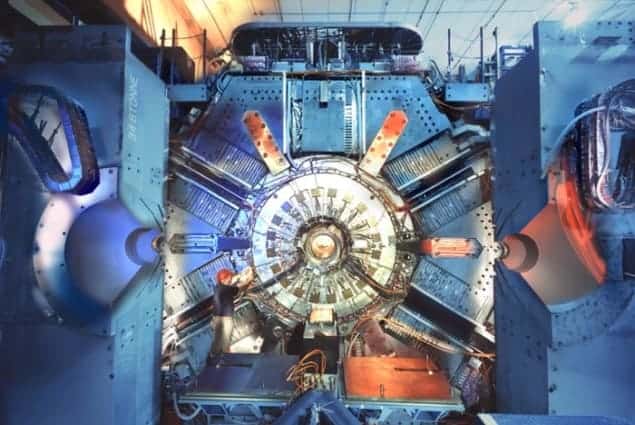The realm of particle physics frequently resembles a vast and intricate tapestry, interwoven with threads of discovery and enigma. One of the most captivating aspects of this domain is the study of symmetries and the violations thereof, which serve as critical indicators of the underlying laws governing the universe. Among these, time-reversal symmetry has long captivated physicists, suggesting that the fundamental operations governing physical processes should be invariant when viewed in reverse. The BaBar experiment has etched its name in the annals of physics through its pioneering efforts in directly measuring time-reversal violation, thus unveiling a new facet of particle interactions and reshaping our comprehension of the cosmos.
Located at the SLAC National Accelerator Laboratory in California, the BaBar collaboration comprised an expansive assembly of physicists striving to elucidate the perplexing behavior of B mesons—particles that serve as a key player in the study of CP violation. CP violation is a phenomenon that implies a discrepancy in the behavior of matter and antimatter, and is fundamental to our understanding of why the universe is predominantly composed of matter despite the early moments following the Big Bang, which should have produced equal amounts of both. The BaBar experiment, operational from 1999 to 2008, harnessed electron-positron collisions to generate these elusive B mesons, enabling precise measurements crucial for the intricate dance of particle interactions.
The metaphor of the ticking clock provides an illuminating lens through which to examine time-reversal violation. Imagine a finely tuned timepiece—its hands moving gracefully in a synchronous ballet, embodying the elegance of time’s flow. In physics, time-reversal symmetry suggests that processes should also exhibit this gracefulness even when viewed in reverse; however, the BaBar experiment revealed that, akin to a clock that occasionally ticks backward, certain processes involving B mesons do not adhere to this symmetry. This unexpected deviation not only challenges preconceived notions about the temporal flow of events but also opens new avenues for understanding the fundamental forces of nature.
At the heart of BaBar’s groundbreaking discovery lies the measurement of the asymmetry in the decay rates of B mesons into their antiparticle counterparts. Specifically, researchers observed that B mesons exhibit a propensity to behave differently when examined against their time-reversed counterparts—demonstrating a preference in their decay pathways that breaches the long-held postulate of reversibility. This pivotal measurement stands as a testament to the nuanced interplay of quantum mechanics and provides compelling evidence for theories that extend beyond the Standard Model. Moreover, it posits tantalizing implications for the predominance of matter over antimatter in the vast universe we inhabit.
Utilizing sophisticated detection technology, the BaBar collaboration dissected the decay patterns of B mesons, capturing approximately 500 million events in the process. These observations facilitated a rigorous statistical analysis, allowing physicists to unveil the subtle differences between B mesons and their counterparts. The calibration of this data involved a rigorous interplay of theoretical frameworks and experimental verification, employing complex algorithms to ensure rigorous accuracy.
In the tapestry of modern physics, the direct measurement of time-reversal violation by the BaBar experiment serves as a cornerstone for new theoretical developments. It resonates profoundly with the work of prominent physicists like Andrei Sakharov, who proposed the Sakharov conditions outlining the necessary criteria for the observed matter-antimatter asymmetry in the universe. BaBar’s findings bolster scenarios wherein certain interactions exhibit violations of time-reversal, suggesting that such phenomena could impart the necessary imbalance required to explain the cosmic predominance of matter.
Nevertheless, the implications of this revelatory measurement extend beyond the confines of particle physics. They reverberate through the cosmic expanse, invoking questions about the nature of time, causality, and the fundamental structure of reality itself. If certain processes are not symmetric with respect to time, one must ponder the philosophical ramifications of such an asymmetry. What does it mean for our understanding of time’s arrow—the inexorable march toward entropy and disorder?
While the BaBar experiment made significant strides towards unraveling the intricacies of time-reversal violation, it also paved the way for subsequent investigations into this elusive area of study. The Legacy Survey of the existing data from BaBar has inspired new research efforts, including the ongoing work at the Large Hadron Collider and other future endeavors aimed at delving deeper into the nuances of B meson decays. The promise of newfound discoveries looms over the horizon, tempting physicists to further explore the paradoxes inherent in time’s fabric.
In conclusion, the first direct measurement of time-reversal violation by the BaBar experiment signifies a monumental advancement in our quest to comprehend the universe’s fundamental laws. Through its meticulous observations of B mesons, BaBar has not only illuminated the profound intricacies of particle interactions but has also beckoned to subsequent generations of physicists to embark on explorations that challenge conventional wisdom. It is a testament to the endless pursuit of knowledge—a journey into the very heart of reality that inspires awe and curiosity, much like the enigmatic nature of time itself.












